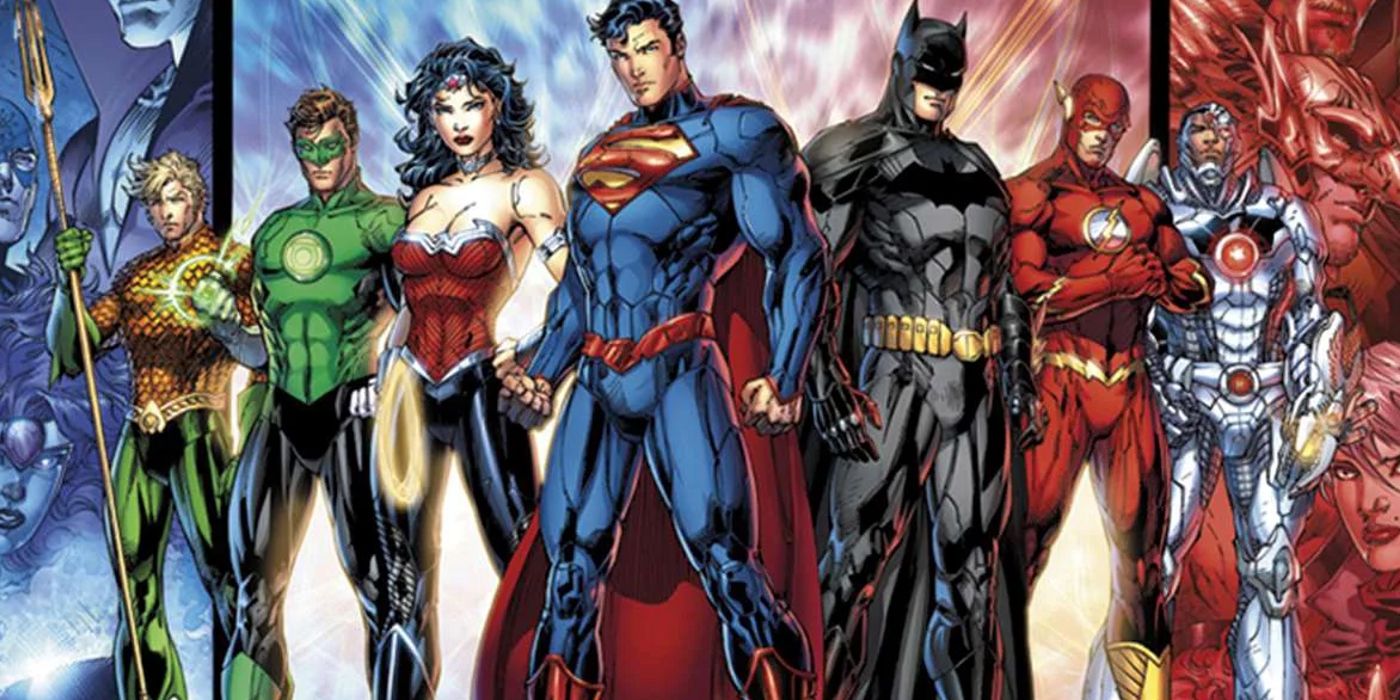[[{“value”:”
Summary
Reboots like the New 52 have drastically affected character histories, like Roy Harper’s interactions with his daughter.
DC’s Infinite Frontier allows for compelling stories and emotional payoffs from the ever-shifting continuity.
DC Comicshas become notorious for its absurdly messy continuity over the past few decades, which has made learning about character history — especially within the Justice League — an especially daunting task. And while messy continuity can certainly be a problem, it can also lead to a surprising number of emotional moments that wouldn’t be possible otherwise, like in one story starring Green Arrow and his family.
Green Arrow’s family has had some of the worst luck with reboots in the DC Universe. Not only has Oliver Queen been separated from his family time and time again, but several of his family members have also straight up disappeared due to shifting continuity, especially after the Flashpoint and New 52 reboot.
One of the many characters to come to Oliver Queen’s aid in Green Arrow #10 by Joshua Williamson and Sean Izaakse is none other than Mia Dearden. Mia was erased from continuity during the New 52 era, and she’s recently been brought back, reuniting Speedy with Green Arrow for the first time in many years. This emotional reunion was only possible to begin with because of DC’s shifting continuity.
The New 52 launched in 2011 to mixed reception from fans and critics. The initiative completely rebooted the DC Universe, often reverting characters to “square one” in terms of origins, relationships, and skills.
“The Family Reunion We’ve All Been Dying to See”: Green Arrow’s Fan-Favorite Family to Finally Reunite – But At What Cost?
Green Arrow and his family have been separated for years. Now, they finally get a family reunion – but is it one they’re all going to survive?
Green Arrow’s Family Gets the Perfect Post-Reboot Reunion Fans Longed For
GREEN ARROW #10 (2024)
Writer: Joshua Williamson Artist: Sean Izaakse, Tom Derenick Colorist: Romulo Fajardo Jr. Letterer: Troy Peteri Cover Artist: Sean Izaakse, Romulo Fajardo Jr.
Green Arrow’s family has seen the most reunions because of DC’s strange continuity, with the biggest example being the reunion of Roy Harper and Lian Harper. Roy is Lian’s father, and the two have been inseparable since birth, except for the period of the New 52 where Lian ceased to exist. Over the years, DC teased the possibility of Roy going on a search for his missing daughter, but it was only recently, in Green Arrow #1 by Williamson and Izaakse, that Lian and Roy were brought together again: a heartfelt moment that fans had been waiting a long time to see. The touching reunion was only possible because DC’s continuity changes erased Lian.
The New 52 was a very strange time in DC’s history. Knowing that getting into new comics was difficult for readers, DC tried to streamline everything by restarting its shared universe. Characters were reset to their origins, and this new status quo included resetting character relationships. People like Batman and Superman were, for the most part, brought back to square one, with readers getting to see the Justice League forming for the first time. But resetting history also meant trimming some fat, and certain characters were erased for a more streamlined experience, such as Mia Dearden and Wally West.
Despite Batman continuity largely remaining the same, the Bat-Family also experienced a number of their own post-reboot “reunions,” especially as fan-favorite characters like Stephanie Brown and Cassandra Cain finally returned to the DCU.
The Flash Reunion Between Wally West and Barry Allen Was Made Possible by Messy Continuity
Sometimes Shifting Continuity Can Grant More Emotional Freedom
While DC’s shifting continuity can certainly be annoying for long-time fans, there are also plenty of benefits. Green Arrow’s emotional reunion with Mia was only possible because Mia had been gone for quite a while, as the New 52 didn’t use the majority of the Green Arrow family in its stories. And Green Arrow isn’t the only character this has happened to in 2011 and beyond. While characters like Batman, Superman, and their close allies are usually immune to this phenomenon due to their popularity, characters like the Flash have also infamously lost family members, only for grand returns to happen.
One of the biggest examples of this is the fate of the third Flash, Wally West. Wally was the singular Flash for an entire generation of fans in the 1990s, but when the New 52 rolled around, Wally was completely replaced with a new version of the character called Wallace. This wasn’t just a slightly different version of Wally though, as Wallace was an entirely new character with a different history and set of motivations from Wally. Wally’s absence eventually led to a major reunion when, shockingly, Wally West was able to return after having been erased, leading to an emotional reunion with his uncle and Flash mentor, Barry Allen.
Wally’s status as the fan-favorite Flash was cemented in a now-iconic
The Flash
run by notable DC writer Mark Waid, whose new series
Absolute Power
with Dan Mora is about to send shockwaves through the DCU. Waid’s
The Flash
run is available now in collected editions from DC Comics, and
Absolute Power
by Waid and Mora launches this July.
Infinite Frontier and Dawn of DC Continue That Work to This Day
Fans were not happy seeing characters they had loved for decades suddenly being removed. Eventually, DC tried to course-correct with the Rebirth event, leading to what is now known as the Rebirth era. It was during this time that the DC Universe became a lot lighter and brighter, since the New 52 was often criticized as being overly dark and miserable. While this was a step in the right direction, it still wasn’t perfect — but it was better. Rebirth would eventually lead to Infinite Frontier, an era all about how “everything is canon.” DC creators can, for the most part, use anything from the characters’ long history in their stories.
Having strict continuity actually stifles the creative freedoms of creators far more than having the loose and currently ever-shifting DC continuity.
The Infinite Frontier era has granted creators a ton more freedom and allowed them to bring back older characters who were thought forgotten for major emotional payoffs. Creators have also been able to use the shifting continuity to tell compelling stories, such as the recent Jason Aaron and John Timms Action Comics run, where Bizarro goes berserk after his planet of Htrae vanishes after one continuity shift too many. It’s a tragic look at someone who lost everything due to the cosmic events that DC characters, and fans, seem to take for granted. But it’s also a story that wouldn’t be possible without DC’s continuity constantly moving around.
Some of the greatest events in DC history have also been born from its absurd continuity, such as the iconic Crisis on Infinite Earths by Marv Wolfman and George Pérez, an entire story with the sole purpose of cleaning up DC’s multiverse and continuity and making a single Earth with a single history. So, while it may be initially confusing for new readers, having strict continuity actually stifles the creative freedoms of creators far more than having the loose and currently ever-shifting DC continuity.
Changing DC Continuity Offers Far More Story Potential
DC’s Continuity Can Be Confusing, But It Also Has Major Pay-Offs
One of the best examples of using shifting continuity to tell a story is without a doubt the Infinite Crisis event, during which DC brought back the Earth-2 versions of certain characters as major antagonists for part of the story. Earth-2 was the original Earth where the first versions of Batman and Superman appeared. But after the multiversal collapse seen in Crisis on Infinite Earths, the Earth-2 Superman was left without his people and planet. This led him to try and overwrite Earth-1 with his Earth. This entire tragic moment would not have been possible without DC’s shifting continuity.
The entire
Infinite Crisis
saga spans countless tie-in titles, prologues, and series, but the main event series is by Geoff Johns and Phil Jimenez and is available now digitally and in collected editions from DC Comics.
Instead of strictly adhering to the past, many major DC events completely rely on DC’s continuity being something that can be played with. As long as characters remain who they are at their core, then there’s no reason their histories shouldn’t be played with a little bit as a form of creative freedom. While this definitely has the negative drawback of making it harder for new readers to get into the comics, DC Comics has also shown just how many good stories can come out of a looser continuity as well — especially for a number of Justice League families, and most especially for Green Arrow.
The ongoing Green Arrow series, featuring touchingly emotional post-reboot reunions, is available now from DC Comics.
“}]] DC’s messy continuity can be a good thing. Read More

